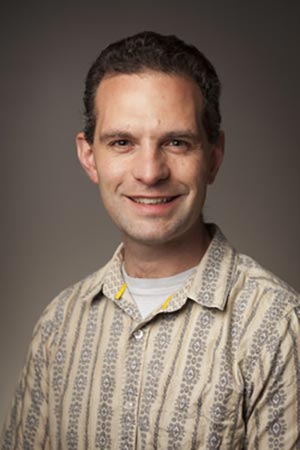Marschner honored for computer graphic realism
By Bill Steele

Steve Marschner, professor of computer science, will receive the 2015 ACM SIGGRAPH Computer Graphics Achievement Award for his work on modeling the appearance of natural materials in computer graphics and animation.
His research has produced the most realistic images to date of the highlights of blond hair, the glow of a baby’s skin, the glints of metals, the glitter of paint, the gloss of polished wood, the stretch and motion of a knitted sweater, and the sheen of silk. He combines 3-D models of the materials, down to their fine structure, with simulation of how light interacts with the materials. He also examines the real materials to capture their appearance and validate the graphic simulations.
The award will be presented at the 2015 SIGGRAPH conference on computer graphics Aug. 9-13 in Los Angeles, where Marschner will give a talk.
Each year, the award recognizes an individual for an outstanding achievement in computer graphics and interactive techniques. Marschner’s seminal work in 2003 on hair showed that it is necessary to model scattering from the elliptical shape of hair strands to correctly predict their multiple distinctive highlights. In 2001, his work on subsurface scattering simulated the glow of translucent materials including skin, marble, milk and food. This work contributed to the appearance of the computer-animated character Gollum in the “Lord of the Rings” movies.
Marschner has pioneered techniques to measure the fine structure of real materials to provide a model on which graphic simulation can be based. His recent work on representing the detailed structure of fabrics has enabled the most realistic visual appearance rendering and motion simulation of fabrics to date. He also has contributed to the simulation of translucent pigments and faces.
Before joining the Cornell faculty in 2002, he worked in the Computer Graphics lab at Stanford on material appearance modeling, and on The Digital Michelangelo Project to create 3-D scans of classic sculptures and artifacts.
In 2004 he shared a Technical Achievement Award from the Academy of Motion Picture Arts and Sciences for significant advances in the realism of computer graphic animation.
Media Contact
Get Cornell news delivered right to your inbox.
Subscribe